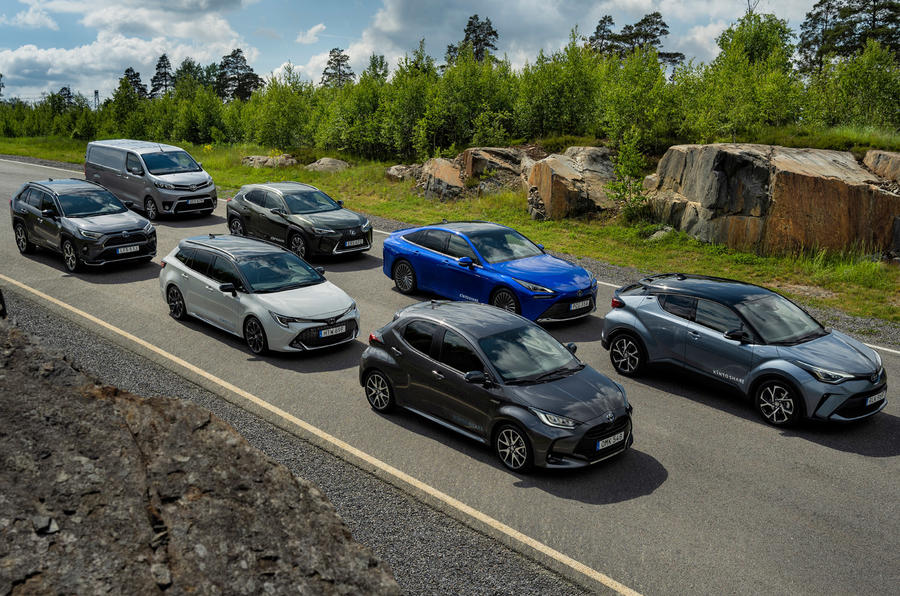'Fail fast, fail often’ is a start-up buzz phrase that could have been invented to describe car makers’ ventures into the world of mobility.
Car sharing, car clubs, micromobility, ride-hailing buses, subscriptions: all have been tried by brands over the past few years and, with a few exceptions, most have been a financial failure.
However, the same startup ethos dictates that you learn and move on, so the car industry has taken a different approach. Now all the different elements that fall under the umbrella term ‘mobility’ are being grouped together to offer a co-ordinated range of services that could reflect the changing way we use our cars.
Seemingly disparate elements such as car-sharing, EV charging subscriptions, used car subscriptions, ridehailing and leasing are coming together under one brand overseen by a single executive. Prominent examples to emerge over the past year or so include Renault’s Mobilize, Toyota’s Kinto and Stellantis’s Free2Move.
For example, Kinto, named after a Japanese cartoon cloud, includes Kinto One (leasing operations), Kinto Flex (car subscriptions), Kinto Ride (ridehailing), Kinto Join (corporate carpooling) and Kinto Go (multimode transport). Not all elements run in all markets, but Toyota launched Kinto Go in Derby as a pilot of its ‘mobility as a service’ (MAAS) phone app that can be used to link together and pay for connecting journeys on different forms of transport, one of which in the future might be a Toyota-run and developed ride-share or car-share vehicle.
Kinto One also has a UK presence after Toyota rebranded its leasing functions and bought out the UK leasing arm of Inchcape in 2019. The car manufacturers are worried that as buying habits change, they’re going to be outflanked by disruptors with more digital or financial savvy. “Once the leasing companies get the customer, frankly we’re just a supplier. Kinto is partly defensive,” said Toyota’s now head of Europe, Matt Harrison, at the launch of Kinto last year.
Mobilize is also assembling mobility brands that it owns or has a significant stake in, such as Zity, Renault Mobility, Karhoo, iCabbi and Glide.io. “The automotive industry is changing. More and more drivers are choosing not to own their vehicles,” said Mobilize CEO Clotilde Delbos in April. Renault aims for Mobilize to generate 20% of group revenues by 2030, the exact same revenue target and date that the Volkswagen Group has set for subscriptions and other mobility offerings.
The Volkswagen Group’s latest move into subscriptions is the launch in Germany of the ID 3 and ID 4 electric cars, costing from €499 per month with either a three-month or six-month minimum term. It joins subscription schemes such as Care by Volvo, Hyundai’s Mocean and Jaguar Land Rover’s Pivotal. Subscription is a fancy word for bundled leasing. Businesses have long used leasing (where the car isn’t owned but is handed back after a fixed period), as are private buyers increasingly. Subscriptions go further by bundling elements such as tyres, servicing and sometimes insurance to leave a flat monthly fee.















Join the debate
Add your comment
Personally, the various OEM backed mobility schemes have been targeting the wrong demographics who wouldn't take advantage of the USPs. Its safe to say the traditional ownership model is certainly something the older generations still desire, from experience it took a lot of convincing my 60+ year old parents that leasing rather than buying was better for them as they like to swap cars every couple years and handing over a large cash sum every time made little sense. But for myself, I previously thought owning a car made sense when in reality all I needed a car for was for a month or two in the summer to head out of London on the weekends or the ad-hoc trip to pick people up or head to Ikea. I've recently sold my car and now fully utilise Zipcars when I do need a car, but looking at the OEM schemes they are something I will never consider purely based on cost. Targeting a more premium experience at a younger demographic doesn't work due to those who can afford that experience will likely be happy to buy the car and have it sitting unused 96% of the time. Conversely, the older generations who can afford it don't want the bells and whistles that they will never benefit from. Therefore, OEMs need to identify who they are trying to market this to and create a product their target customers will actually want.